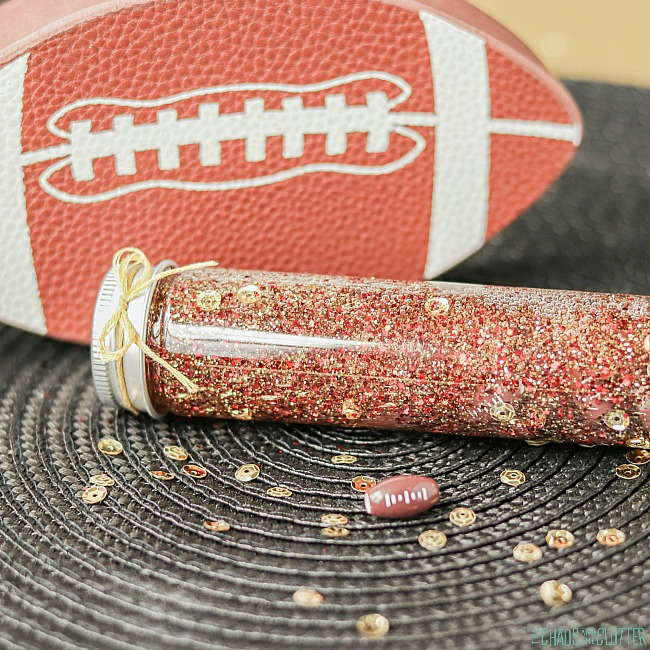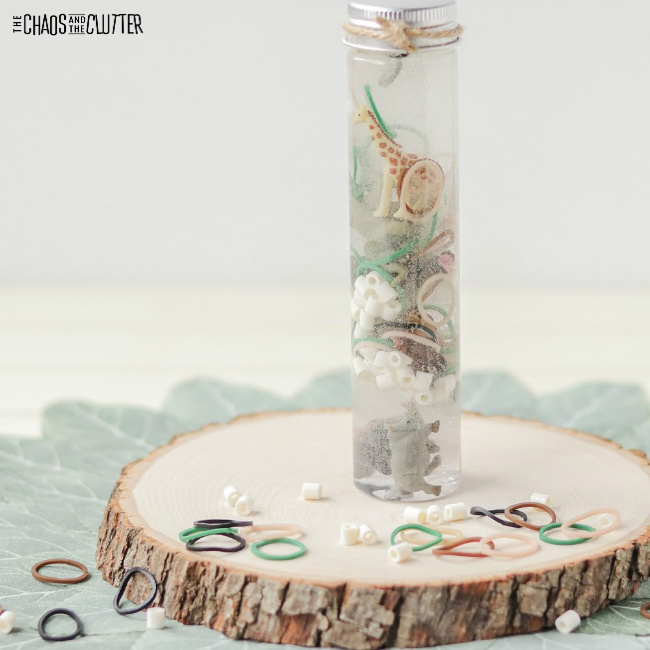Homemade playdough is so much better than store bought. It’s softer, less crumbly, easier to play with, and it lasts far longer. Making your own is easier than you might expect. 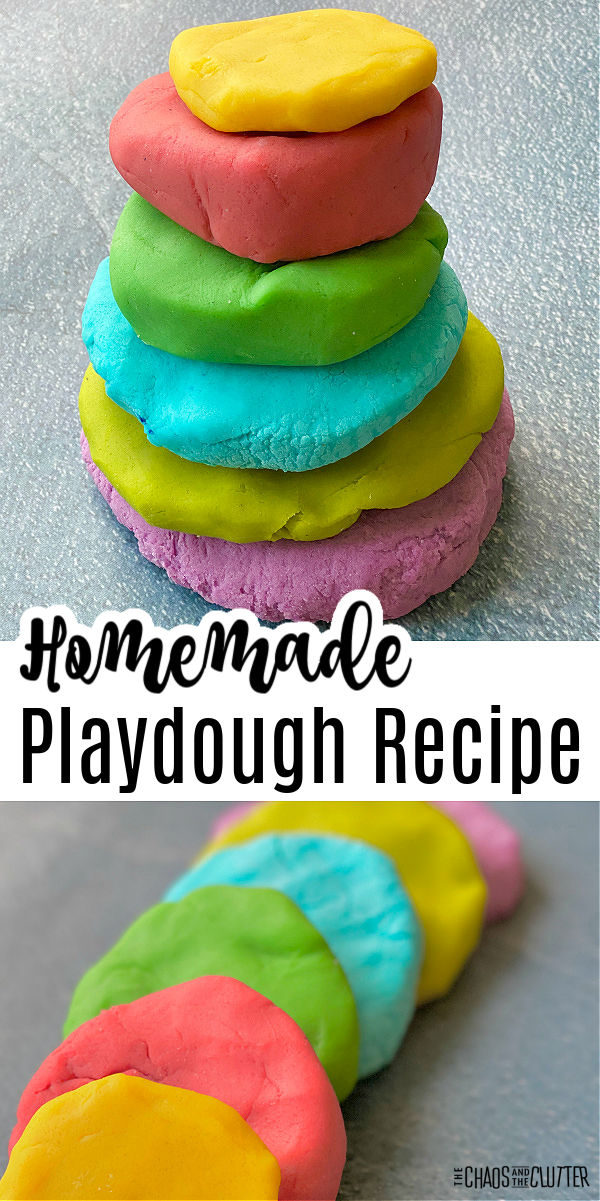 When I was growing up, my mom made homemade playdough. For some reason, our playdough was always green. I’m not sure why she never made it another colour, but when I think of homemade playdough, a certain shade of green is what comes to mind!
When I was growing up, my mom made homemade playdough. For some reason, our playdough was always green. I’m not sure why she never made it another colour, but when I think of homemade playdough, a certain shade of green is what comes to mind!
My mom used a recipe she got from my Auntie Barb. When I became a mom myself, I started with that same recipe.
I’ve adapted it slightly, but this is essentially just a good old-fashioned homemade playdough recipe.
Of course, when I discovered that playdough could be made in the KitchenAid and I could avoid sore arms from all the stirring, I never went back to the stovetop method again.
I’m including instructions for both the KitchenAid and stovetop methods below, but if you have a KitchenAid, that’s the method I recommend.
<h2″>Basic Homemade Playdough Recipe using a KitchenAid:
Supplies needed:
- 1 cup flour
- 1/2 cup salt
- 2 Tbsp. cream of tartar
- 1 Tbsp. cooking oil
- food gel or food colouring
- 1 cup boiling water
- optional: glitter
Directions:
- Put dry ingredients (flour, salt, and cream of tartar) in the KitchenAid mixer.
- Add the oil and food colour and begin mixing using the flat beater.
- As it is mixing on the lowest setting, pour in the boiling water.
- If you want to add glitter, add it at this point.
- Continue mixing until the playdough forms a ball and is the right texture.
- It is now ready to be played with. When not in use, store in a resealable bag or airtight container.
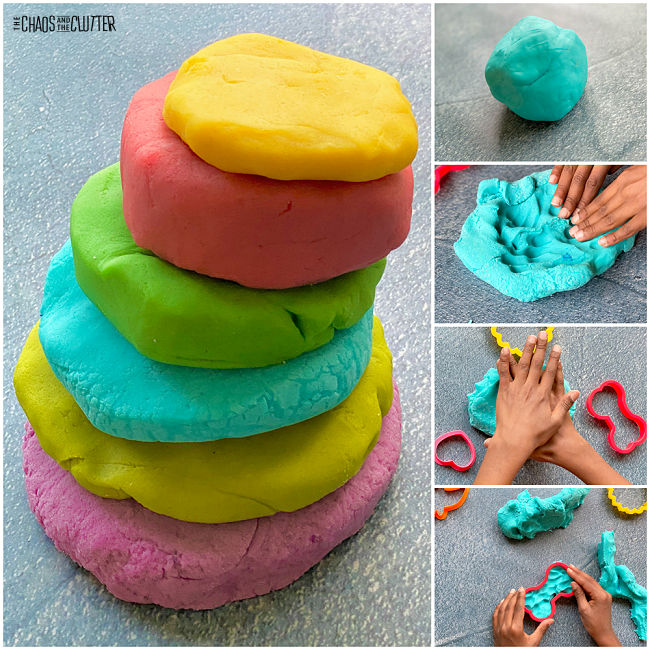
Basic Homemade Playdough Stovetop Recipe:
Supplies needed:
- 1 cup flour
- 1/2 cup salt
- 2 Tbsp. cream of tartar
- 1 Tbsp. cooking oil
- food gel or food colouring
- 1 cup water
- optional: glitter
Directions:
- Mix the dry ingredients together with the oil, food colour, and water in a pot on the stovetop.
- Stir over medium heat with a wooden spoon.
- Scrape the sides and bottom, stirring constantly.
- Keep stirring!
- Cook until the dough forms a ball.
- Remove from heat.
- Place the dough on a piece of wax paper.
- Knead. If you’re adding glitter, mix it in at this point.
- Allow to cool.
- When playdough isn’t being played with, store in an airtight container or resealable bag.
As with all sensory play activities, adult supervision should be used. Consuming large quantities of salt is dangerous for children so this playdough should not be eaten. 
How to scent playdough:
There are several ways that you can add smell to playdough. You can add a few drops of essential oil, spices, or extracts. Scents are either alerting or calming, so you’ll want to choose a scent accordingly.
If you’re wanting to add it to a calm down kit, you’ll want to choose a calming scent whereas if you’re making playdough for a learning activity, you’ll want to add an alerting scent.
Essential oils to add:
- lavender
- peppermint
- lemon
- lime
- wild orange
- grapefruit
- chamomile
- frankincense
- eucalyptus
Extracts to add:
- vanilla
- peppermint
- almond
- caramel
- coconut
Spices to add:
- pumpkin spice
- cinnamon
- cloves
- ginger
Add only one type of scent to each batch of playdough. Be sure to be mindful of allergies.
There are so many ways to play with playdough that go so far beyond play. Kids can work on their fine motor skills, hand-eye coordination, communication, shapes, colours, sensory input, and cognitive skills. 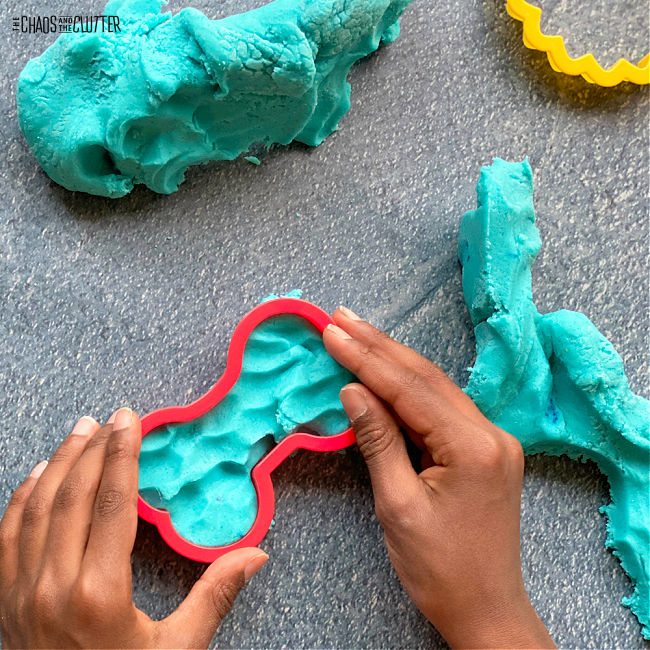
Ways to play with playdough:
- Use printable playdough mats.
- Roll it into ropes and use plastic scissors to cut the ropes to practise cutting skills.
- Play stuck in the mud (especially popular with little boys!).
- Use cookie cutters to shape it.
- Squish it, pull it, scrunch it, knead it. (great for proprioceptive sensory input)
- Apple Tree Game (for counting and colours)
- Rainbow Colour and Counting Game
- Alphabet Stamping using Lego
- Dinosaur Fossils
- Rainbow Fine Motor Activity
- Add a few drops of essential oil to create an olfactory (smell) sensory experience.
- Set out an invitation to play.
- Seashell Fossils
- Make playdough cupcakes.
- Use spaghetti and cereal to practise fine motor.
- Playdough letter mazes are great for letter recognition and hand-eye coordination.
- Make faces.
- Demonstrate the layers of the Earth.
- Press household items into it to create prints.
- Make playdough Mr. Potato Heads.
- Use leftover playdough to make butter slime.
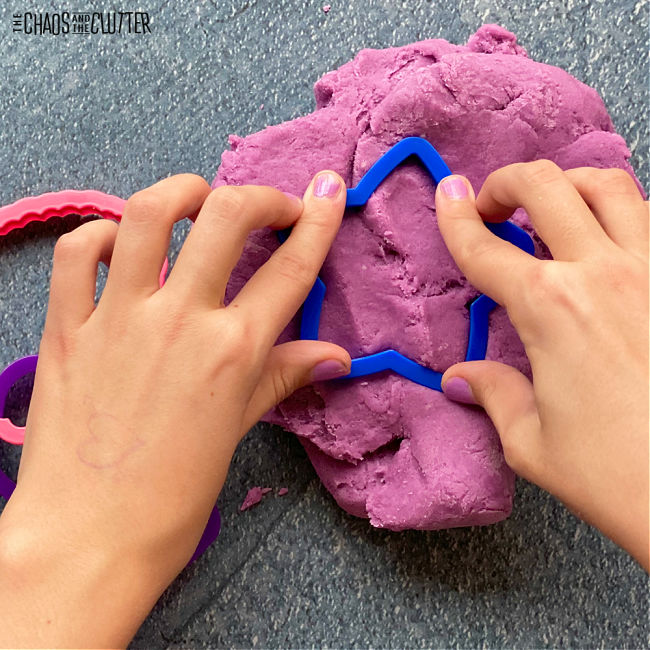 Get an entire set of printable transportation alphabet playdough mats free by entering your email address below. You’ll also be signed up to receive our email series Sensory Activities and Solutions.
Get an entire set of printable transportation alphabet playdough mats free by entering your email address below. You’ll also be signed up to receive our email series Sensory Activities and Solutions.
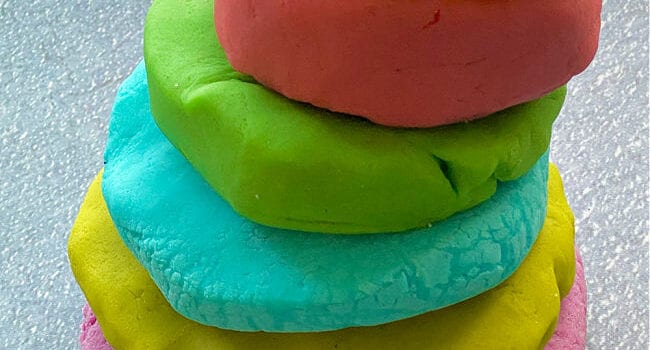
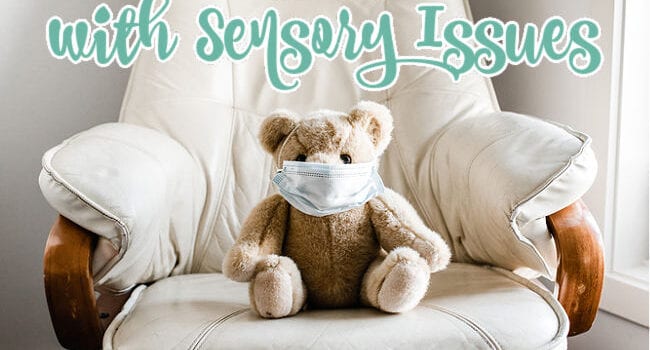
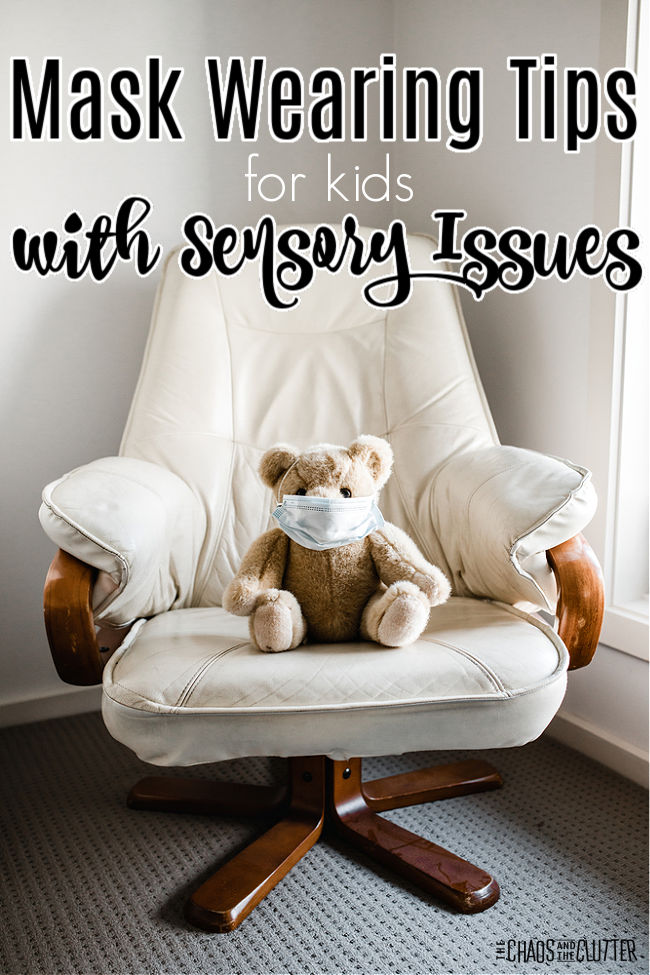 Important note: I know that there continues to be debate over mask wearing. Regardless of how you personally feel about masks, the fact remains that more and more regulations are being put in place requiring the use of masks. This article is not meant to debate the effectiveness of face masks or whether or not they should be mandated. It is meant to address the practicalities of having children wear masks, particularly children who struggle with sensory issues and may therefore find it more difficult.
Important note: I know that there continues to be debate over mask wearing. Regardless of how you personally feel about masks, the fact remains that more and more regulations are being put in place requiring the use of masks. This article is not meant to debate the effectiveness of face masks or whether or not they should be mandated. It is meant to address the practicalities of having children wear masks, particularly children who struggle with sensory issues and may therefore find it more difficult. 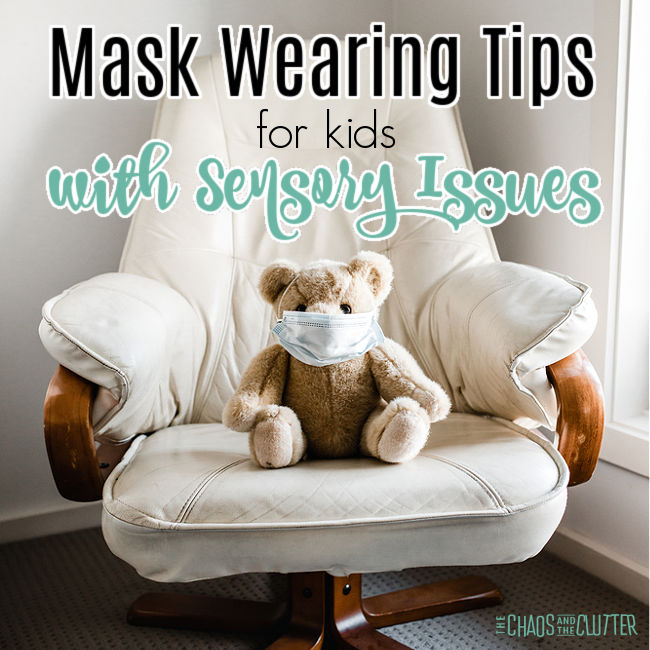
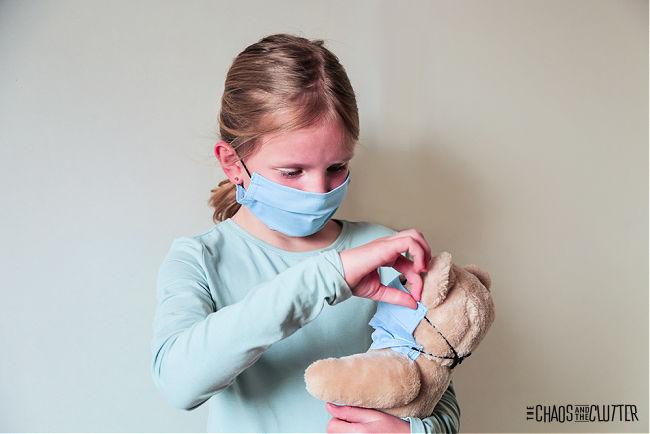
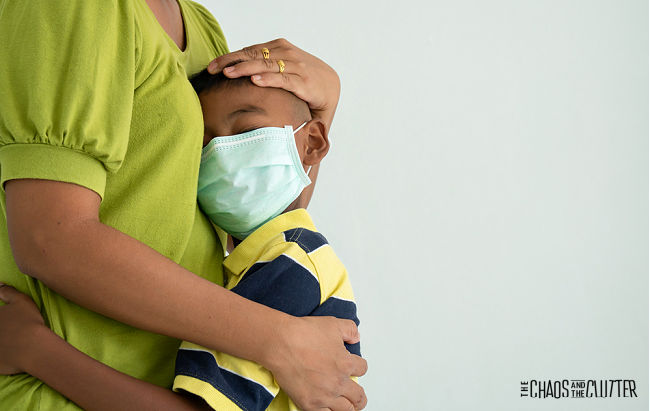
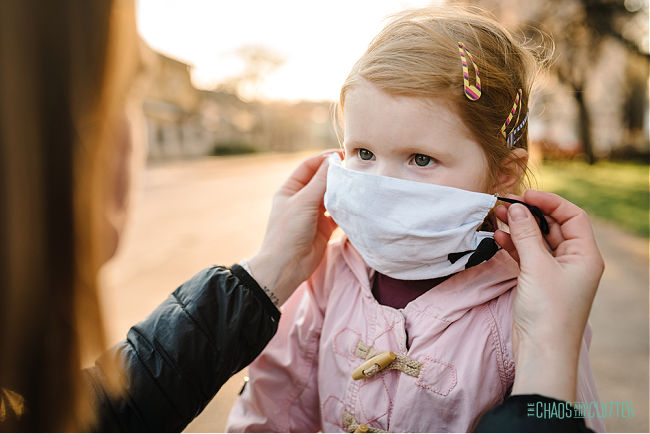
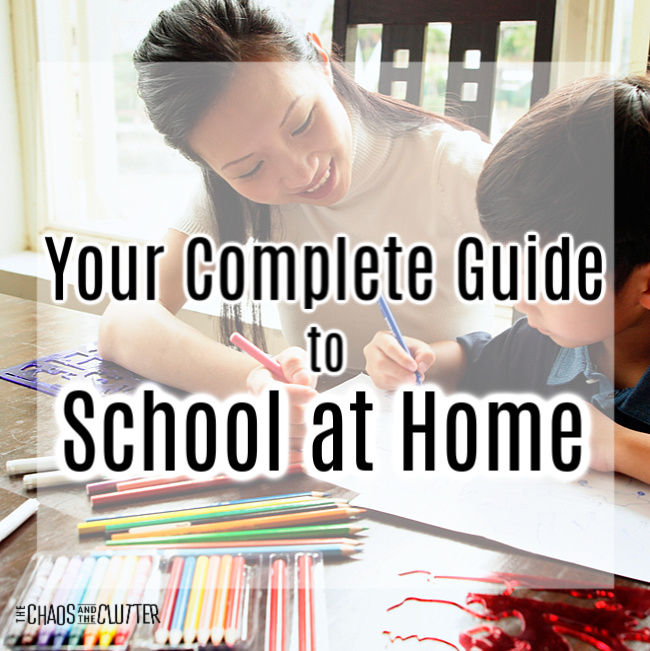
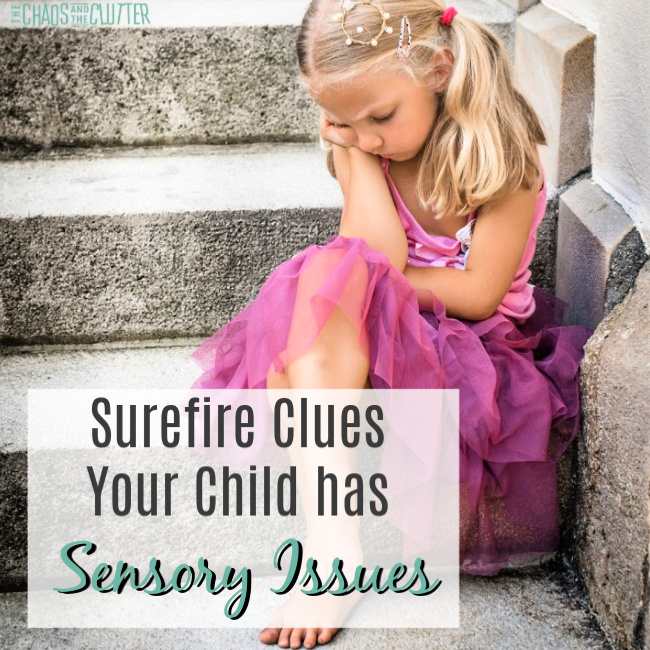

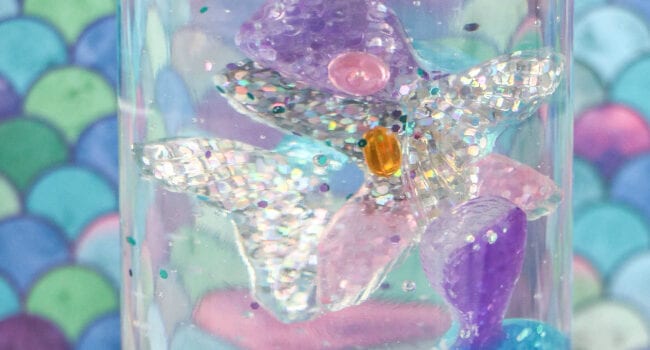
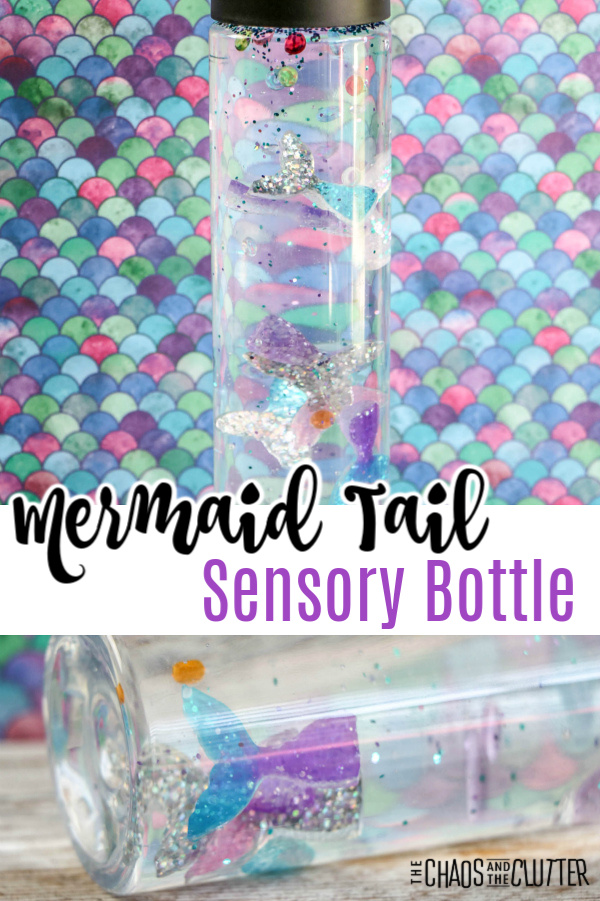 The glitter falls slowly through the glue and water mixture, creating a calm down effect. This sensory bottle also provides tactile, proprioceptive, and visual sensory feedback for kids.
The glitter falls slowly through the glue and water mixture, creating a calm down effect. This sensory bottle also provides tactile, proprioceptive, and visual sensory feedback for kids.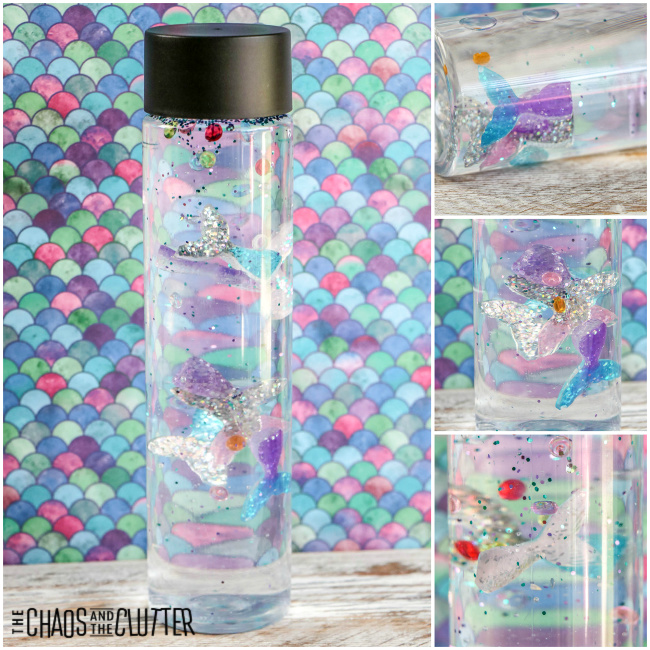 Directions:
Directions: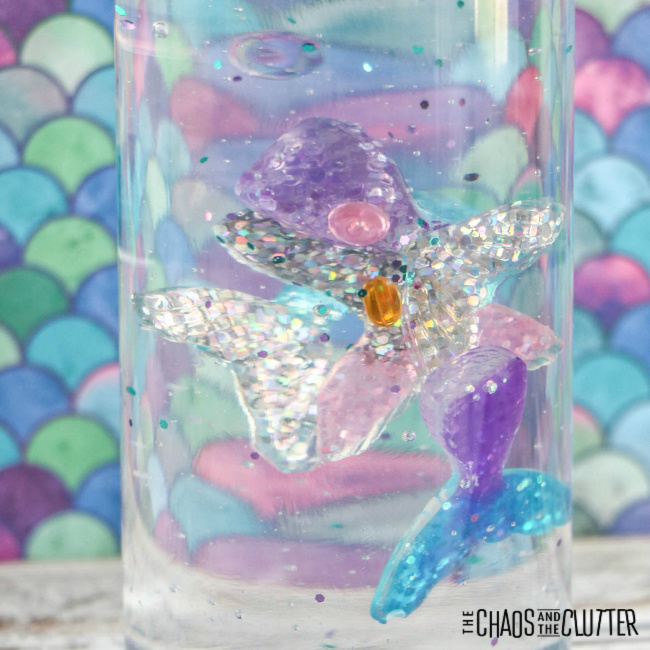 Are you looking for more easy sensory play ideas? Join us for a five day email series on Sensory Activities and Solutions and get a free sample of our Sensory Play Recipes eBook.
Are you looking for more easy sensory play ideas? Join us for a five day email series on Sensory Activities and Solutions and get a free sample of our Sensory Play Recipes eBook.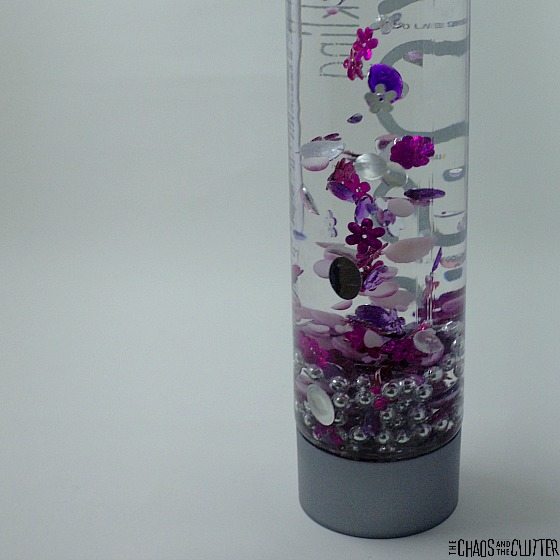
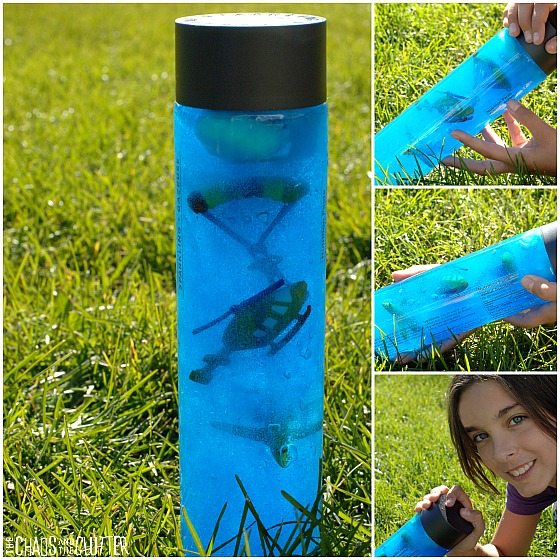

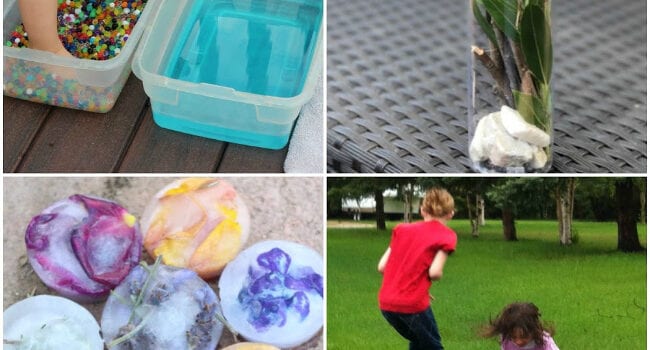
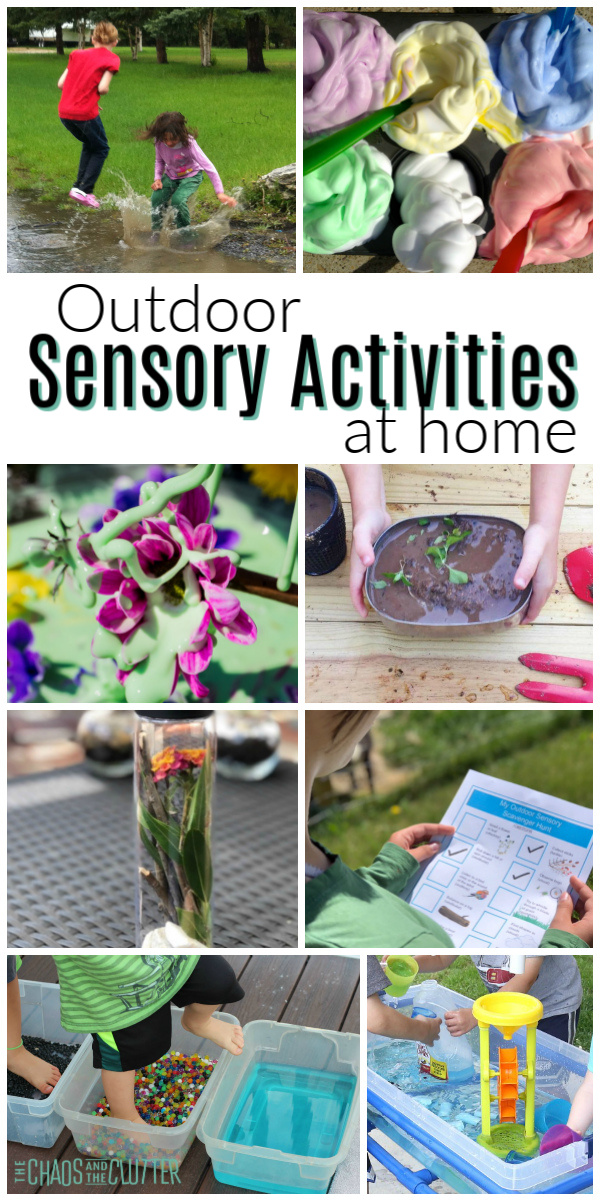 The kids have already begun exploring in the trees and enjoying the sunshine. It has done wonders for their mood now that they aren’t as cooped up anymore.
The kids have already begun exploring in the trees and enjoying the sunshine. It has done wonders for their mood now that they aren’t as cooped up anymore.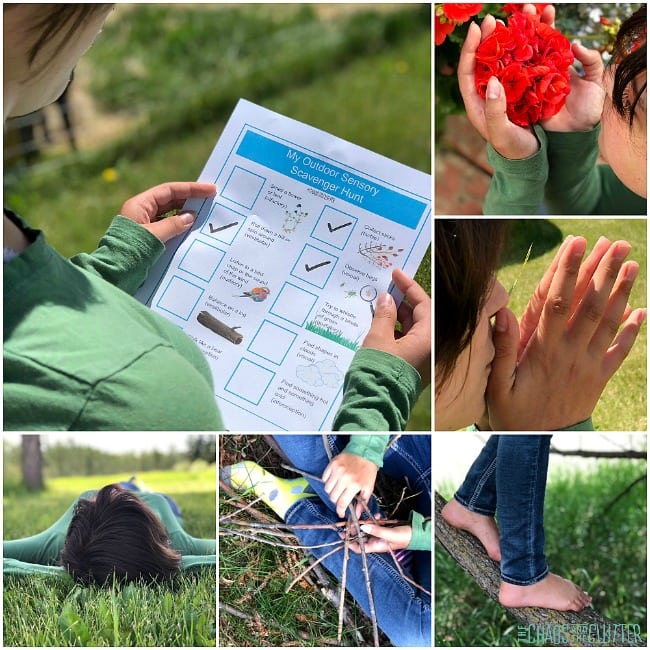
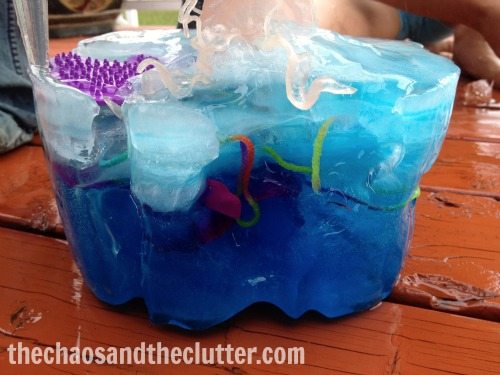
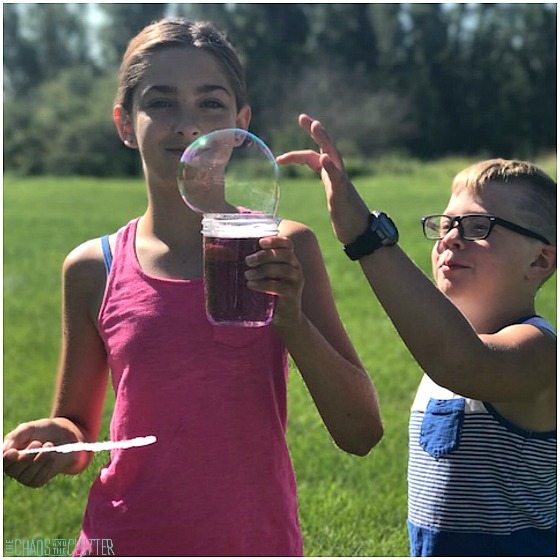
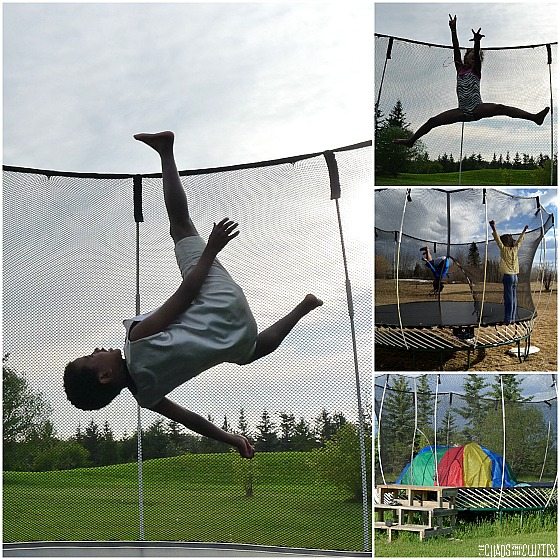
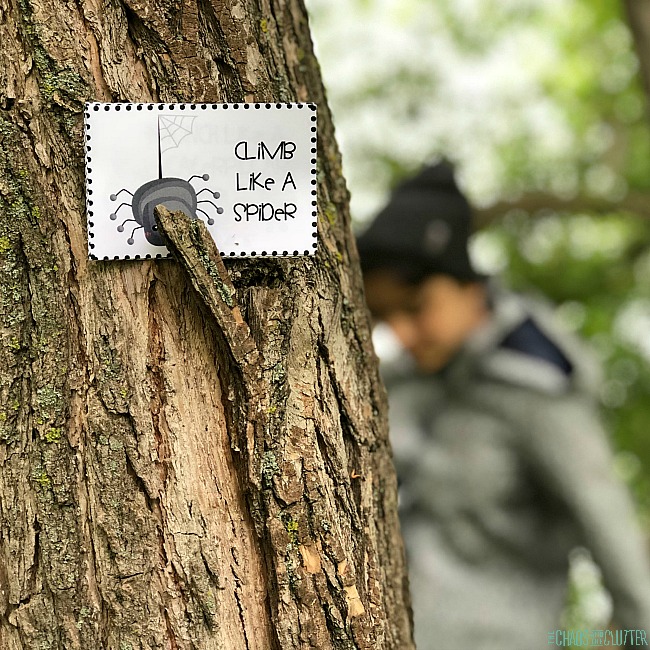
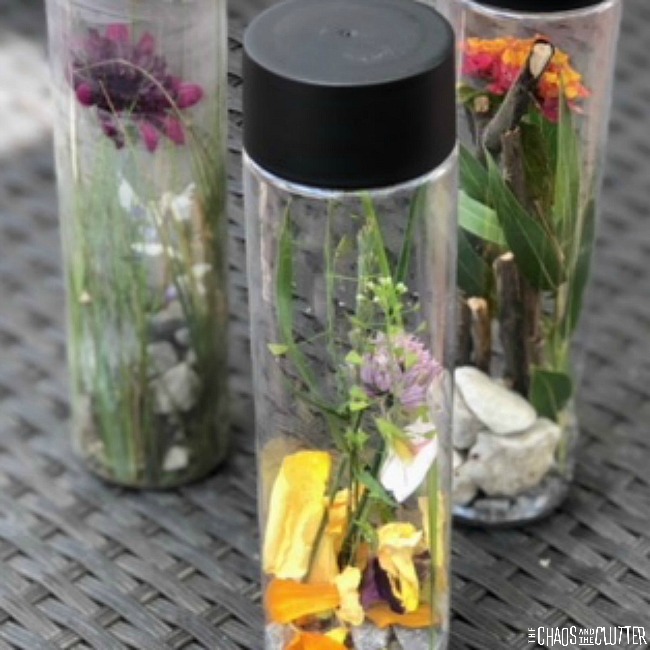
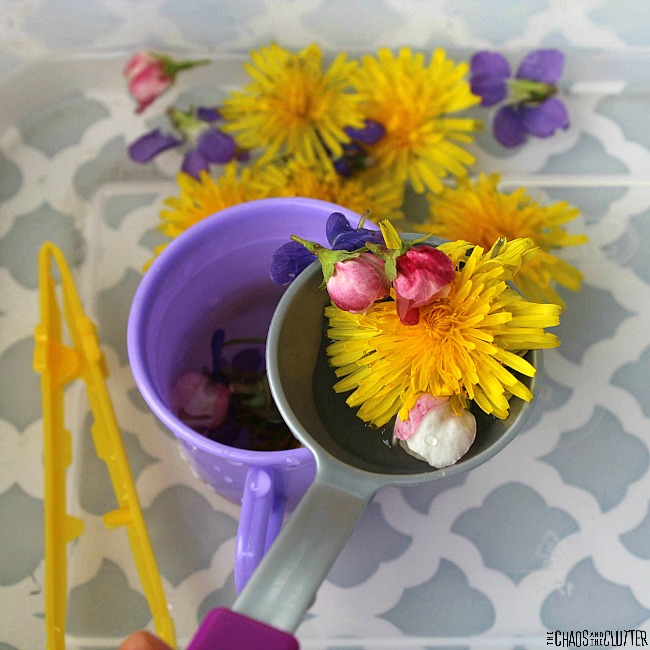

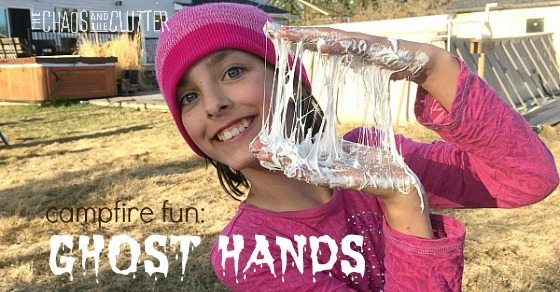
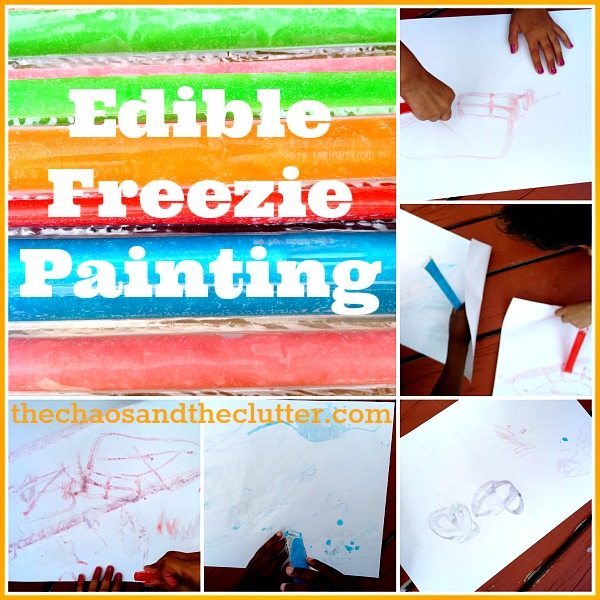
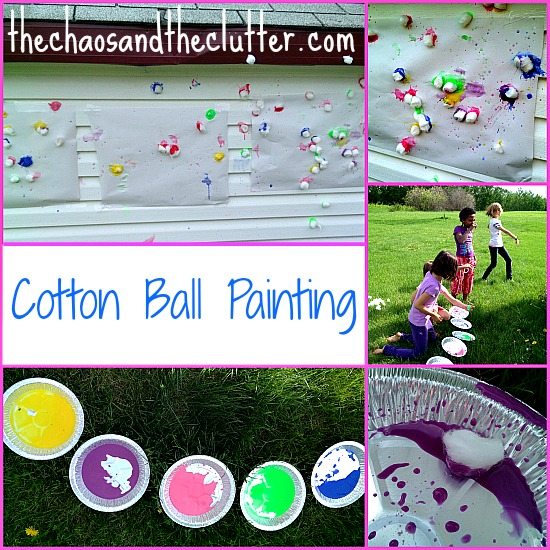
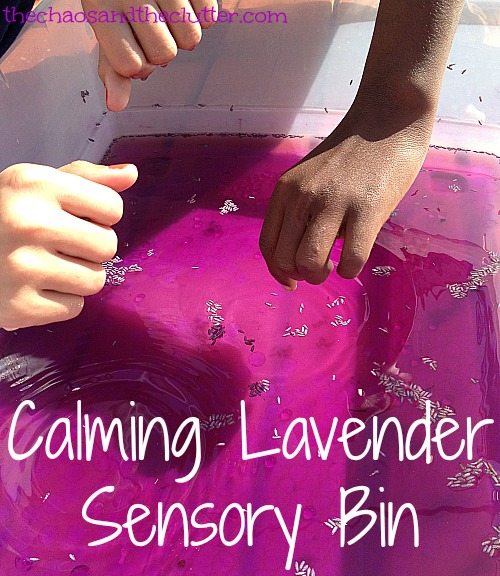

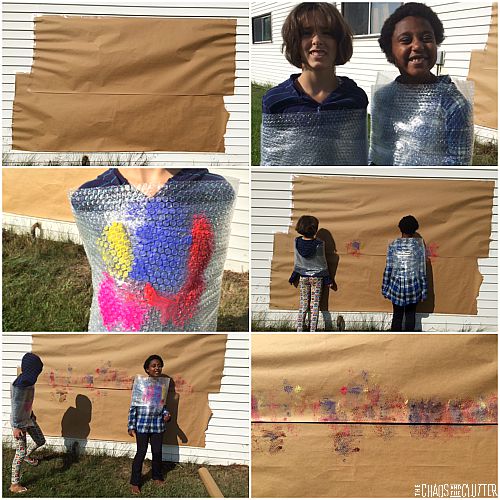
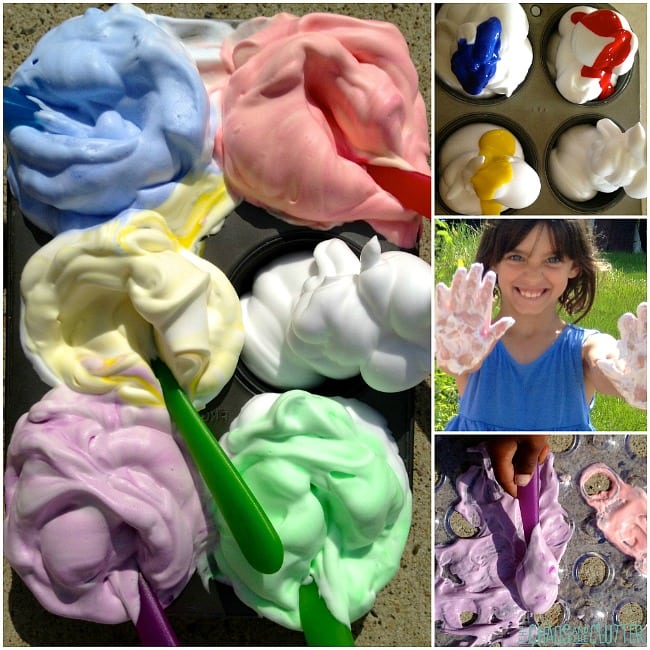

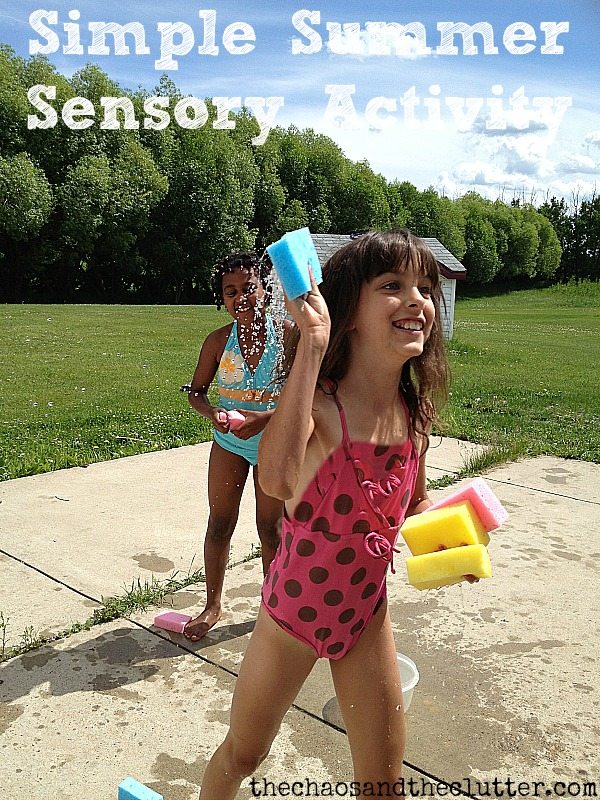
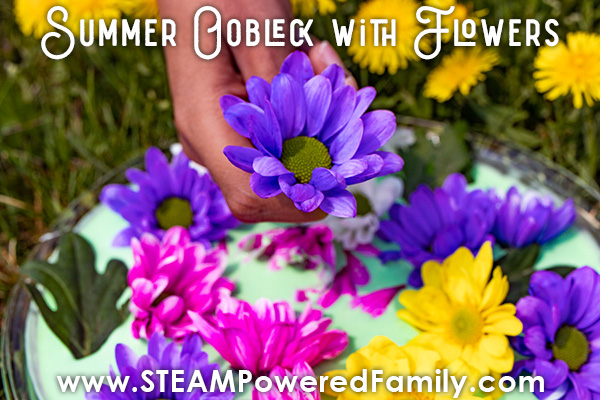
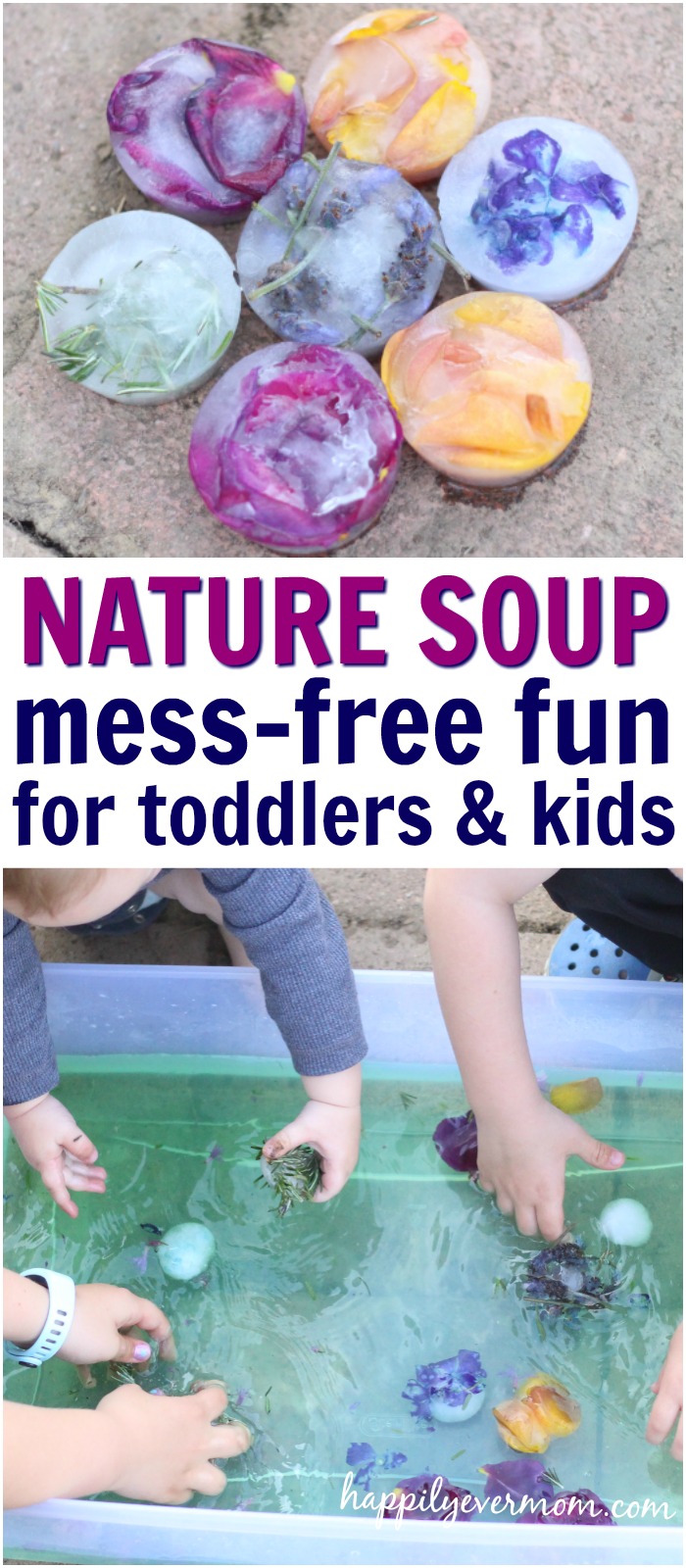

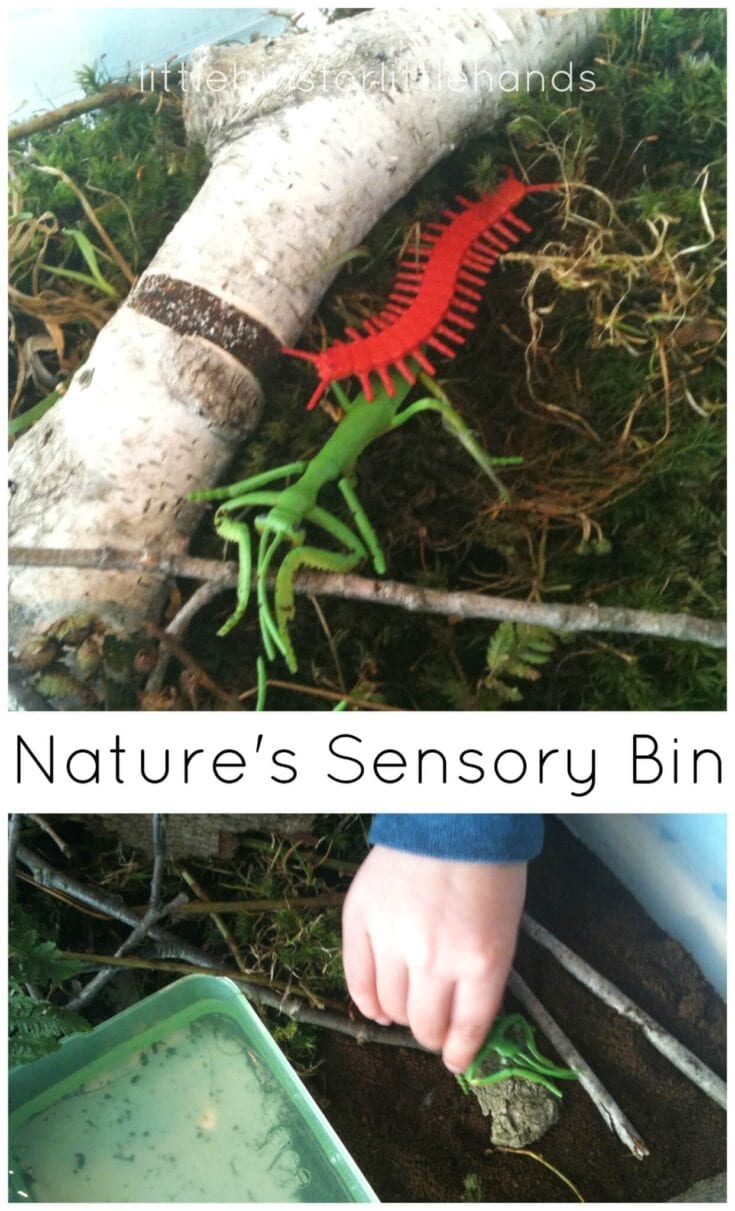
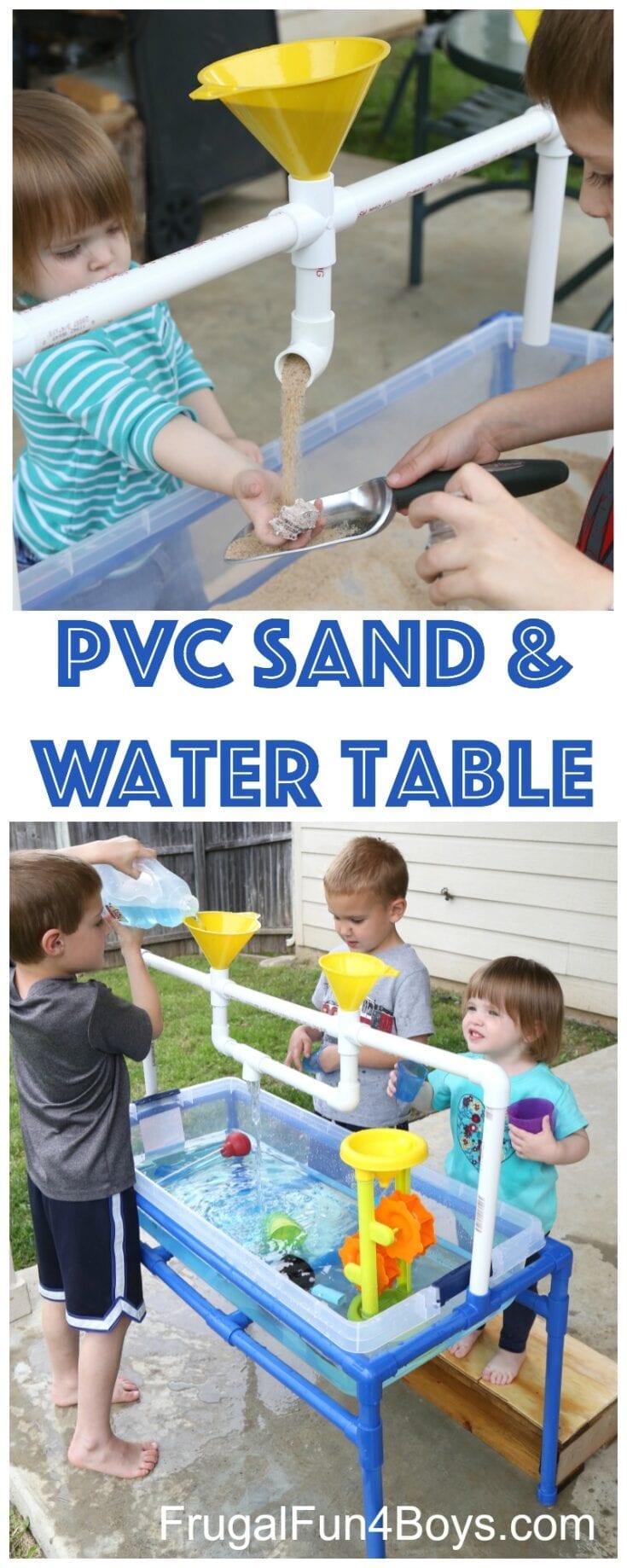
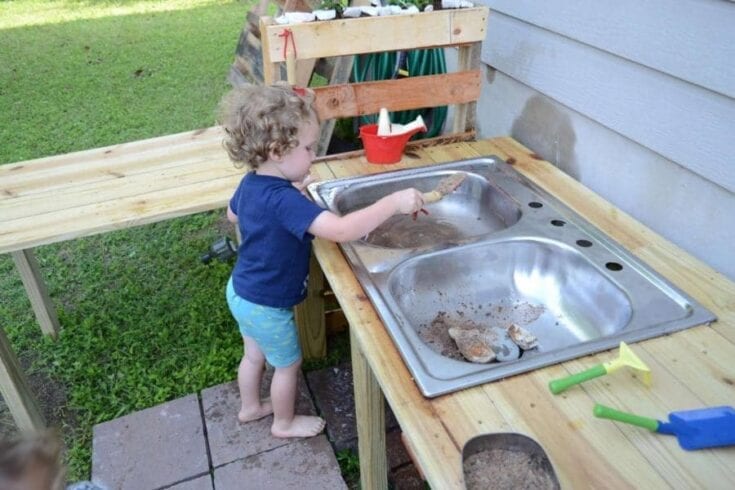
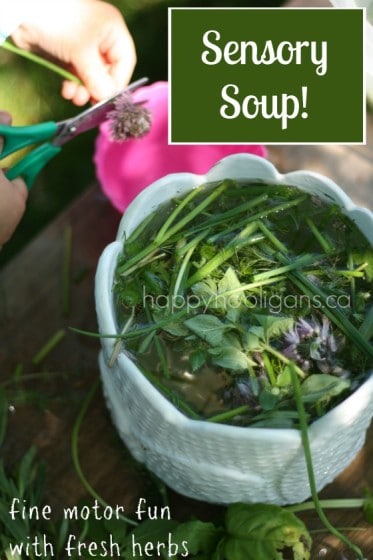
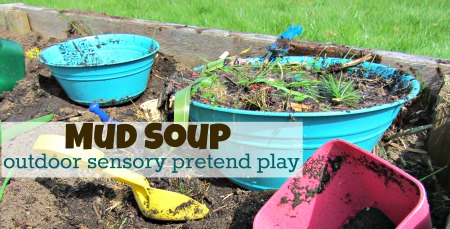
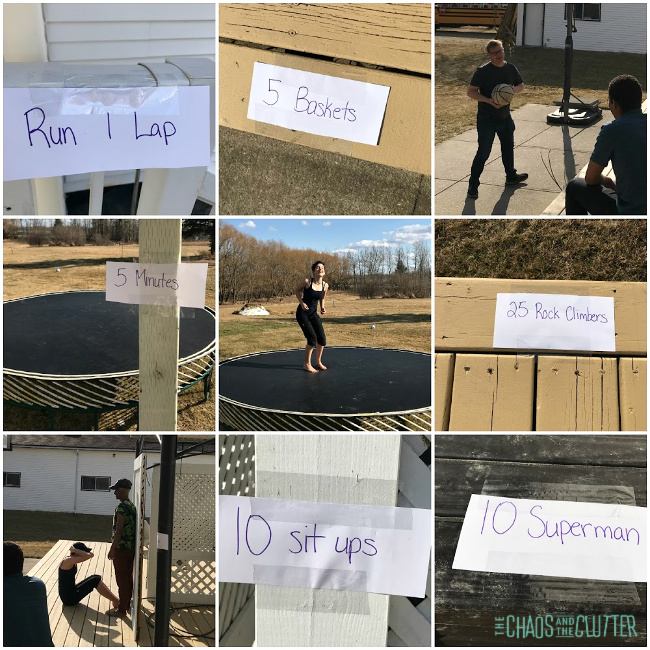 Of course as with all sensory activities, adult supervision should be used.
Of course as with all sensory activities, adult supervision should be used. 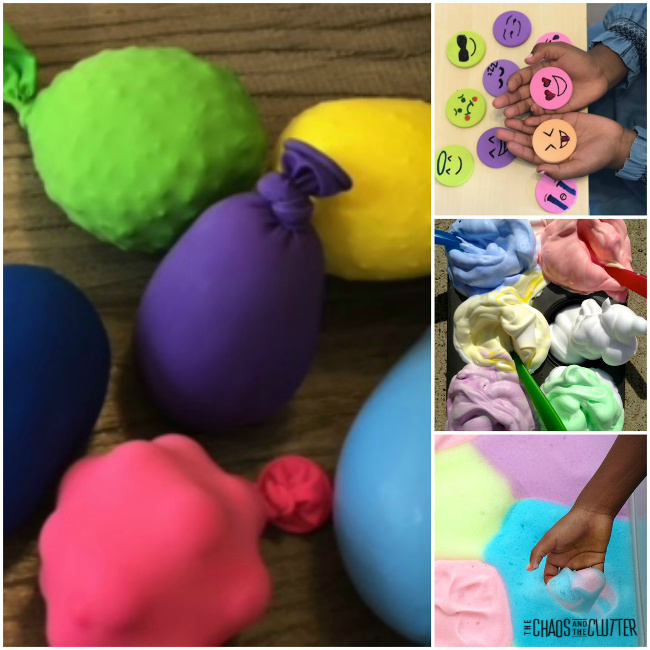
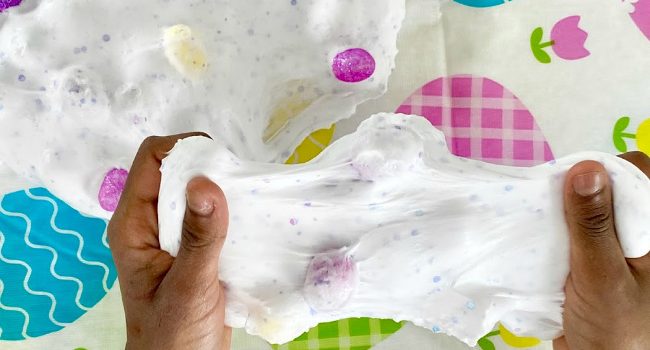
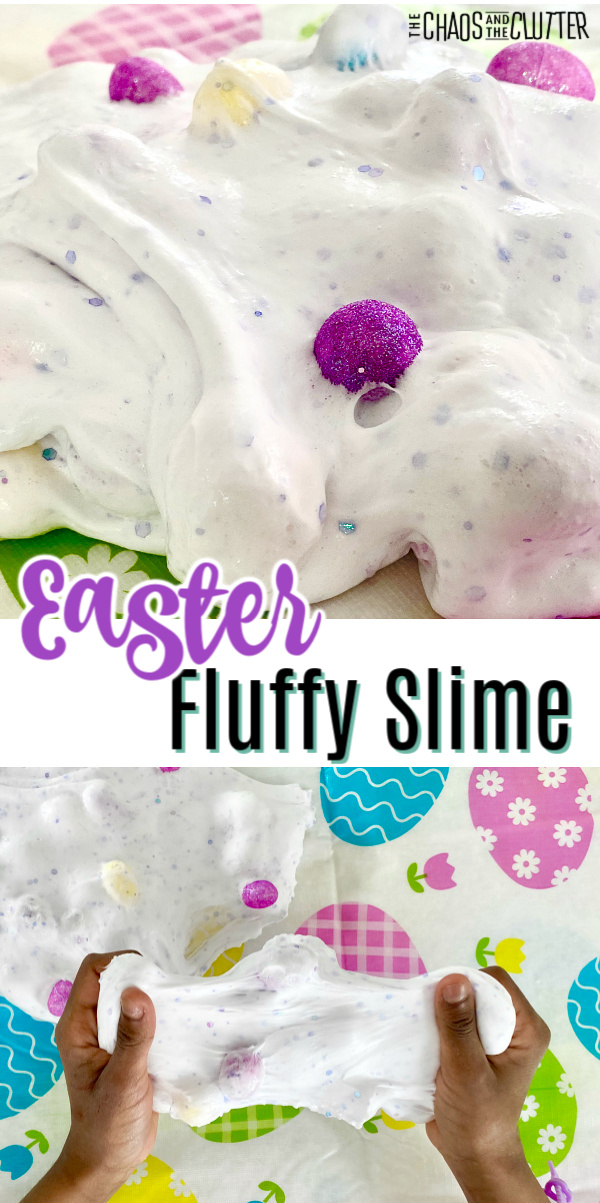 Full disclosure: I’m dreaming of Spring right now because where I live, it is still below freezing and snow blankets the ground a week into April. So I am all about thinking about baby chicks, green grass, and colourful flowers right now! And of course Easter.
Full disclosure: I’m dreaming of Spring right now because where I live, it is still below freezing and snow blankets the ground a week into April. So I am all about thinking about baby chicks, green grass, and colourful flowers right now! And of course Easter.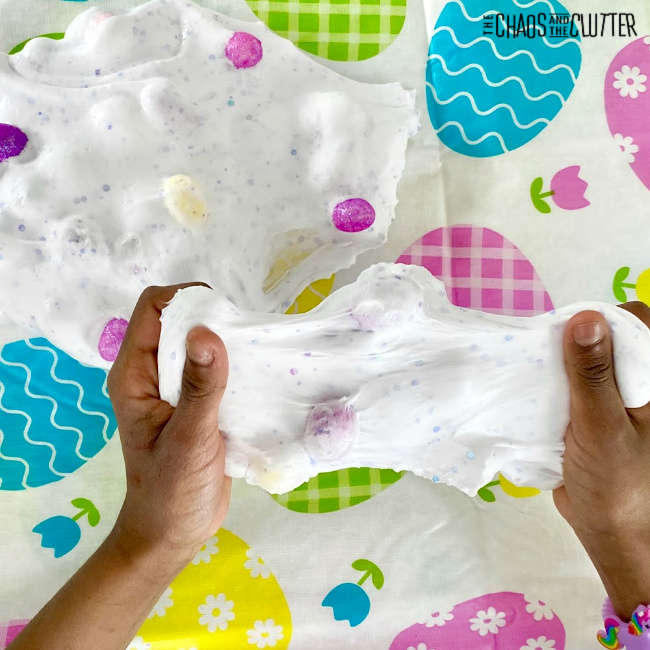 Directions:
Directions: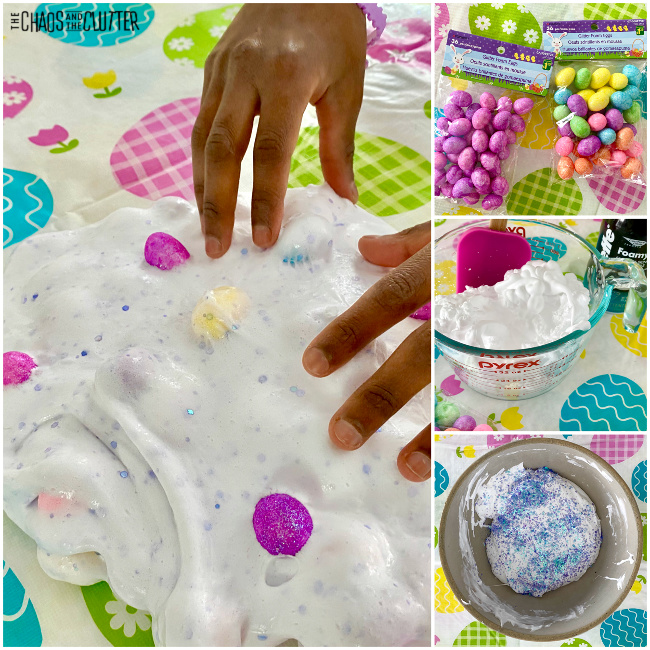
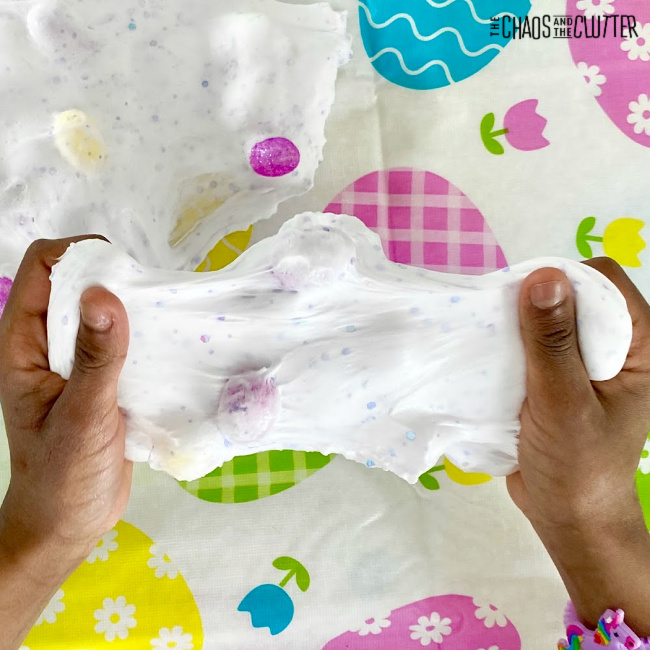 Looking for more easy sensory play recipes to inspire creativity year-round? Join me for a free five day email series on Sensory Activities and Solutions and get a complimentary sample of our Sensory Play Recipes eBook.
Looking for more easy sensory play recipes to inspire creativity year-round? Join me for a free five day email series on Sensory Activities and Solutions and get a complimentary sample of our Sensory Play Recipes eBook. 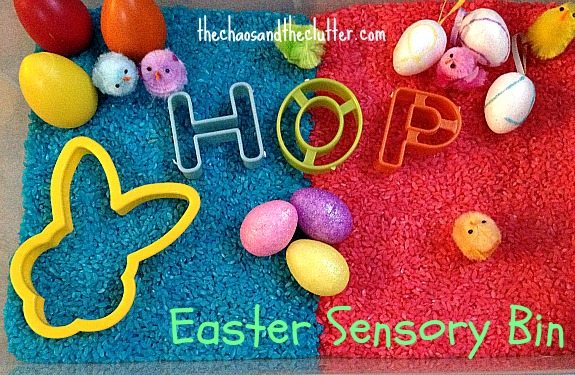

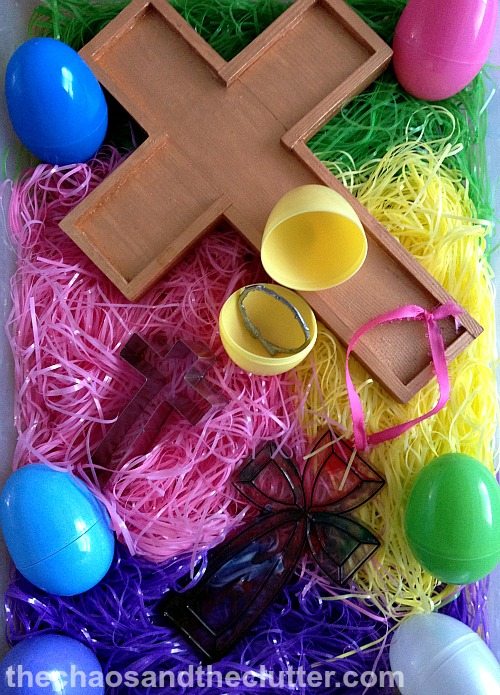
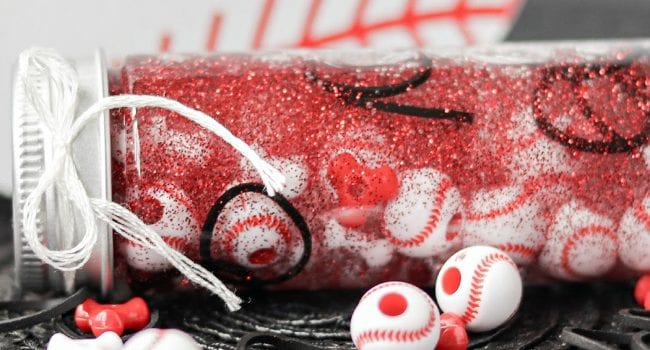
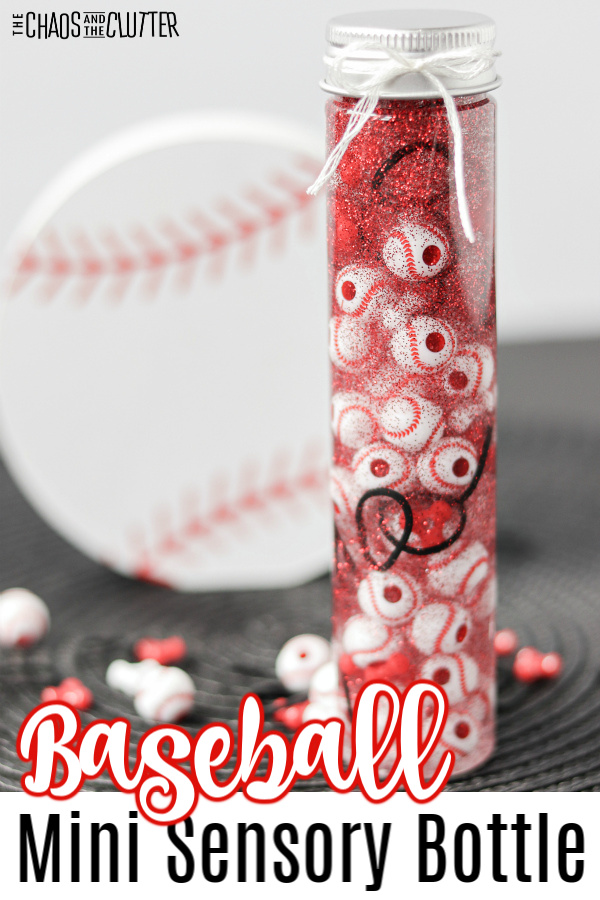
 Directions:
Directions: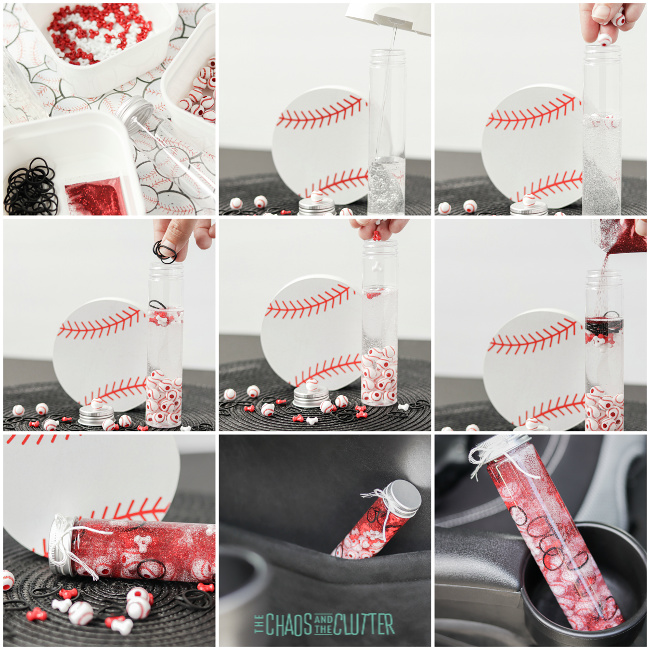
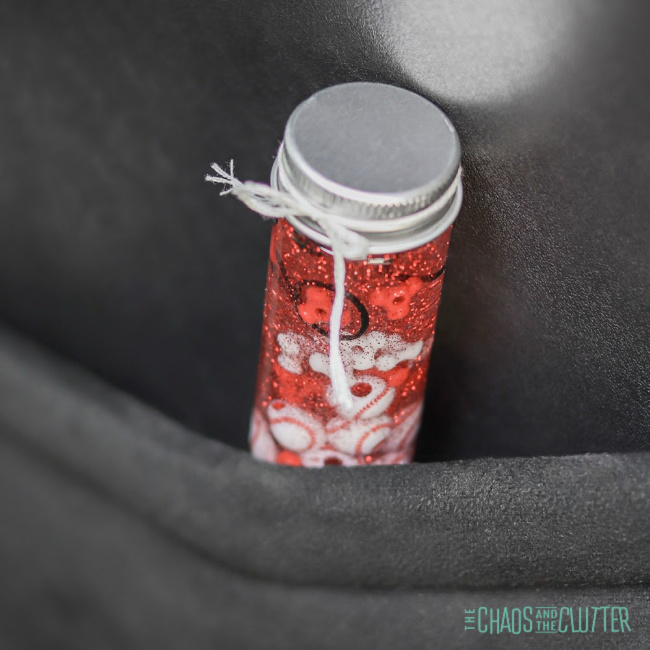 This adorable mini bottle incorporates both the visual and tactile sensory systems. Because the glitter and beads stay suspended in the dish soap and fall slowly as it is turned or flipped over, this can also serve as a calm down bottle. Children can watch the glitter slowly fall as they focus on regulating their breathing.
This adorable mini bottle incorporates both the visual and tactile sensory systems. Because the glitter and beads stay suspended in the dish soap and fall slowly as it is turned or flipped over, this can also serve as a calm down bottle. Children can watch the glitter slowly fall as they focus on regulating their breathing. 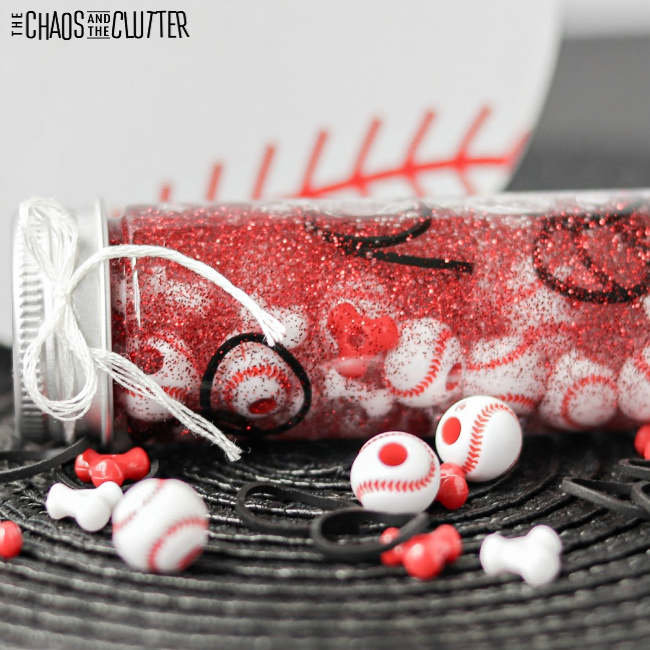 Are you looking for more easy sensory play ideas to use with kids? Join us for a five day
Are you looking for more easy sensory play ideas to use with kids? Join us for a five day 